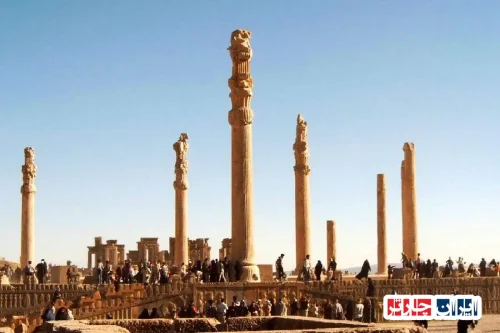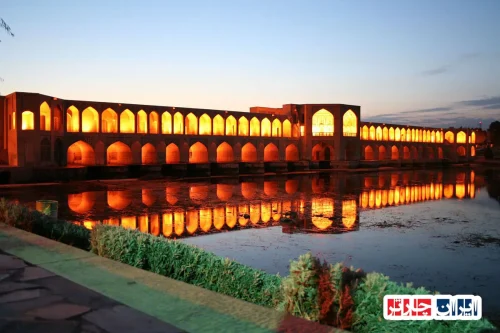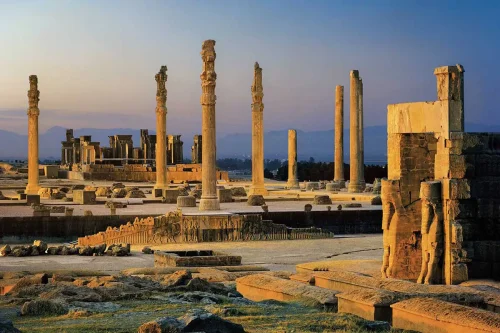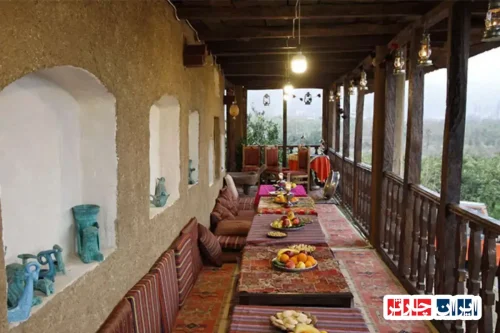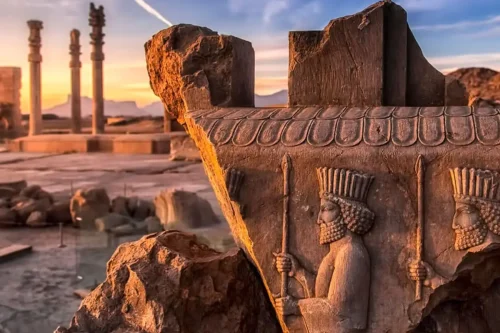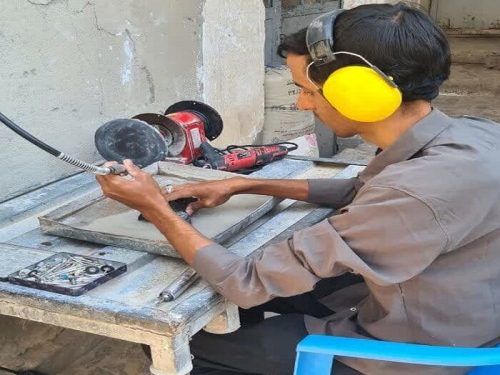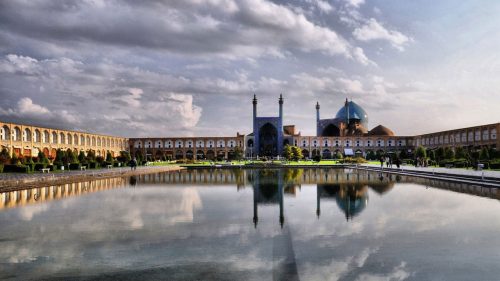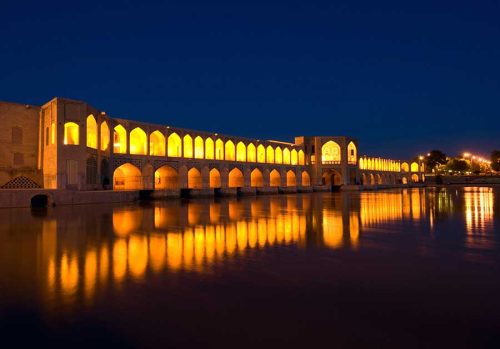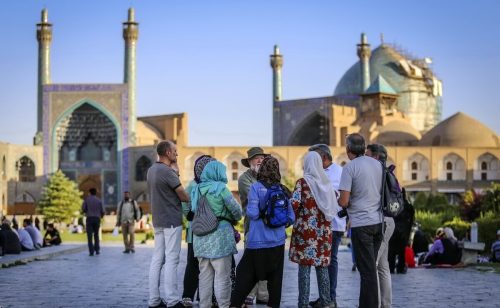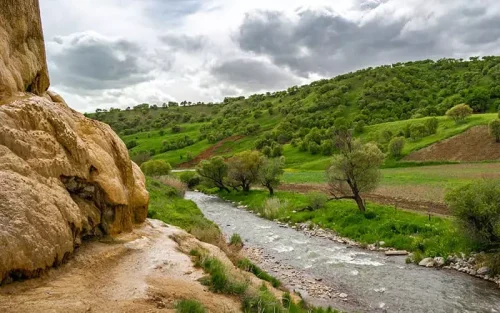News Source : https://www.irna.ir/news/85645532/%D8%A8%D8%B1%D9%86%D8%A7%D9%85%D9%87-%D8%B1%DB%8C%D8%B2%DB%8C-%D8%A8%D8%B1%D8%A7%DB%8C-%D8%AD%D8%B6%D9%88%D8%B1-%D9%85%DB%8C%D8%AF%D8%A7%D9%86%DB%8C-%D9%86%D9%85%D8%A7%DB%8C%D9%86%D8%AF%DA%AF%D8%A7%D9%86-%D9%85%D8%AC%D9%84%D8%B3-%D8%AF%D8%B1-%D8%A7%D9%85%D8%A7%DA%A9%D9%86-%D8%AA%D8%A7%D8%B1%DB%8C%D8%AE%DB%8C
Planning for On-Site Visits by Members of Parliament to Historical Sites
Planning for on-site visits by members of parliament to historical sites is an important and necessary step to enhance the preservation and utilization of the country’s cultural heritage. The CEO of the Fund for the Development and Revival of Historic Sites announced that this plan aims to identify opportunities, achievements, and existing barriers in the process of revitalizing historical buildings. According to his report, organized and meticulous planning for parliamentary members to assess the current status of historical sites and provide effective strategies for their preservation and revival is highly significant.
In a recent meeting with members of the Counsels and Internal Affairs Commission of Parliament, Shahab Talai Shokri elaborated on the activities of the Fund for the Development and Revival of Historic Sites, stating that this fund symbolizes the leader’s New Year message and the realization of public participation in the preservation, restoration, revival, and utilization of historic buildings. He provided relevant statistics, reviewed the process of transferring historical buildings, and attracting public investments. He highlighted that, with cooperation from the Islamic Consultative Assembly in removing specific barriers, many governmental and public historical buildings can be revived.
On the other hand, Mohammad Saleh Jokar, Chair of the Counsels and Internal Affairs Commission of the Islamic Consultative Assembly, introduced the role of the Fund for the Development and Revival of the Ministry of Cultural Heritage as one of the crucial factors in preserving cultural identity and creating employment and tourism opportunities. Jokar emphasized that reviving historical buildings not only supports cultural identity but also provides opportunities for economic development and sustainable local job creation.
Given the high importance of this planning, members of the Counsels and Internal Affairs Commission of the Islamic Consultative Assembly were recently hosted by the Fund for the Development and Revival of Historical and Cultural Buildings of the Ministry of Cultural Heritage during their visit to Yazd Province. This field visit offered a suitable opportunity to observe achievements and identify the requirements for reviving historical buildings in the global city of Yazd. Previously, the Development and Revival Fund hosted a visit from members of the Parliament’s Cultural Commission in Ardabil Province to familiarize them with the fund’s activities and establish effective collaborations in the revival of historical buildings.
These actions represent a coordinated and purposeful movement among government institutions and parliamentary representatives to preserve and revive the country’s cultural heritage. With the successful implementation of these programs, it is expected that historical buildings will not only be preserved but also utilized as resources to attract domestic and foreign tourists, playing a vital role in the economic and social development of diverse regions.
Ultimately, planning for on-site visits by members of parliament to historical sites is an efficient approach for strategic assessment and planning in the realm of cultural heritage revival. This planning not only helps identify strengths and weaknesses in the revival process but also provides an opportunity to strengthen collaborations between various institutions and raise public awareness about the importance of preserving cultural heritage. Continued efforts and a steadfast commitment to preserving and reviving historical buildings can carve a bright and sustainable future for the country’s cultural heritage.
Importance of Planning for Parliamentary Representatives’ Field Visits to Historical Sites
Planning for the field visits of parliamentary representatives to historical sites plays a crucial role in the preservation and revitalization of a nation’s cultural heritage. This initiative aims to optimize the use of historical buildings and identify their current and future needs. The presence of parliamentary representatives not only raises public awareness of the importance of cultural heritage but also provides an opportunity for effective suggestions and feedback to improve the condition of historical sites.
Key Objectives of Planning Field Visits
The planning of field visits for parliamentary representatives to historical sites aims to achieve several objectives, including a thorough assessment of the physical conditions of buildings, identifying obstacles in the restoration process, and providing practical solutions for improvement. Additionally, this initiative seeks to delineate the role of various governmental bodies in supporting cultural heritage and increasing community participation in the conservation of historical sites.
Role of Parliamentary Representatives in Preserving Cultural Heritage
As people’s representatives, parliamentary members have a significant responsibility in the protection and promotion of cultural heritage. Their field presence in historical sites allows for direct evaluation of the buildings’ conditions and ensures compliance with regulations related to heritage preservation. This involvement also fosters closer interaction between representatives and cultural heritage management officials, leading to better decision-making for restoration and maintenance of historical sites.
Challenges and Barriers in Revitalizing Historical Sites
The process of revitalizing historical sites presents challenges and obstacles that need careful identification and resolution. These include financial resource shortages, lack of public awareness, and coordination gaps among institutions. Planning for the field visits of parliamentary representatives is crucial in precisely identifying these barriers and providing appropriate solutions to overcome them.
Collaboration Between Government Bodies and Parliament in Heritage Revitalization
Effective collaboration between governmental bodies and parliament is a key factor in the successful revitalization of historical sites. Planning field visits for parliamentary representatives to these sites offers a chance to enhance these collaborations and to establish the necessary coordination among different institutions. This closer interaction facilitates the acquisition of required resources and eases the restoration process.
Economic Impact of Planning Field Visits
Planning the field visits of parliamentary representatives to historical sites can have positive economic impacts. Revitalizing historical buildings not only contributes to cultural identity preservation but also creates new job opportunities in tourism and related services. Increased cultural tourism can lead to economic growth in various regions and generate sustainable employment.
Previous Successful Experiences in Historical Site Revitalization
Some previous actions in the revitalization of historical sites have yielded significant results that can serve as a model for future initiatives. Analyzing successful experiences of different government bodies and community participation in these processes helps provide more effective solutions and improve restoration efforts. These experiences highlight the importance of thorough planning and extensive collaboration in the successful revitalization of cultural heritage.
The Role of the Development and Revitalization Fund in Field Programs
The Development and Revitalization Fund plays an important role in executing field visit plans for parliamentary representatives to historical sites. This fund provides the necessary financial and technical resources for restoring historical buildings, offering vital support to parliamentary representatives. Additionally, by providing related statistics and data, the Development and Revitalization Fund plays a key role in assessing the current status and predicting future needs of historical buildings.
Future of Planning Field Visits for Parliamentary Representatives
Given the high importance of cultural heritage revitalization, the planning of field visits for parliamentary representatives to historical sites should continue as a strategic approach. The future of such planning can involve expanding collaborations with international organizations, increasing community participation, and utilizing new technologies in the restoration process. Ongoing commitment to preserving and revitalizing historical buildings can open up new prospects for cultural and economic development in the country.
Frequently Asked Questions
- What is the purpose of planning parliamentary representatives’ field visits to historical sites?
- The purpose of planning field visits for parliamentary representatives to historical sites is to assess the potentials, achievements, and existing barriers in preserving and revitalizing these sites.
- What role does Shahab Talaei Shokri play in the Development and Revitalization Fund?
- Shahab Talaei Shokri is the CEO of the Development and Revitalization Fund and is responsible for explaining the fund’s activities in the country.
- What does the Development and Revitalization Fund symbolize?
- This fund symbolizes the Supreme Leader’s New Year’s message and the realization of public participation in the preservation, restoration, revitalization, and utilization of historical buildings.
- What statistics did Shahab Talaei Shokri present at the meeting with the Commission for Councils?
- He presented statistics regarding the transfer process of historical buildings and the attraction of public investments.
- How can the Islamic Consultative Assembly play a role in revitalizing historical buildings?
- The Islamic Consultative Assembly can play a significant role in revitalizing and utilizing many historical and public buildings by removing certain barriers.
- What did Mohammadsaleh Jokar say about the role of the Development and Revitalization Fund of the Ministry of Cultural Heritage?
- He regarded the fund’s role as important and stated that this commission will spare no effort to revitalize the country’s historical capacities.
- What benefits do revitalizing historical buildings have for society?
- Revitalizing historical buildings not only preserves cultural identity but also provides opportunities for job creation and tourism growth.
- How can historical fabric and buildings contribute to identity-focused development?
- Historical fabric and buildings, by preserving and enhancing cultural and historical elements, provide suitable opportunities for identity-focused development.
- Which province did the members of the Councils and Internal Affairs Commission of the Islamic Consultative Assembly visit?
- The members visited the province of Yazd.
- What was the purpose of the field visit to the fund’s activities in the World Heritage City of Yazd?
- The purpose was to review the fund’s activities in the restoration and utilization of historical buildings.
- Before Yazd, which province had the Development and Revitalization Fund visited?
- Prior to Yazd, the fund had hosted the members of the Cultural Commission of the Assembly in the province of Ardabil.
- What impact do existing barriers have on the revitalization of historical buildings?
- Existing barriers can slow down or halt the process of revitalizing and utilizing historical buildings, hence it is essential to remove these barriers.
- How is public participation in the revitalization of historical buildings formed?
- Public participation is formed by attracting public investments and collaborating with local communities to maintain and address the revitalization needs of historical buildings.
- With which organization does the Development and Revitalization Fund collaborate?
- This fund collaborates with the Ministry of Cultural Heritage on the revitalization of historical buildings.
- How can revitalizing historical buildings contribute to tourism growth?
- Revitalizing historical buildings by preserving and restoring them enhances tourism attractions and can increase the number of visitors.
- What role does the World Heritage City of Yazd play in the fund’s activities?
- The World Heritage City of Yazd is a major historical center hosting the fund’s activities in the revitalization and utilization of historic buildings.

